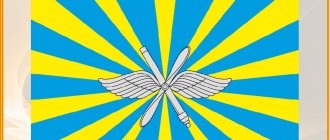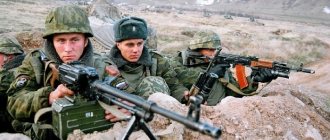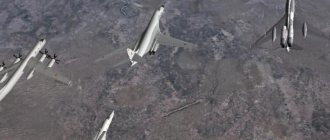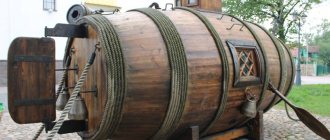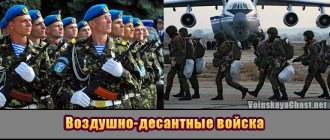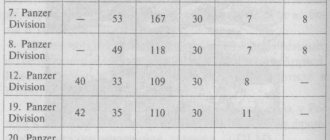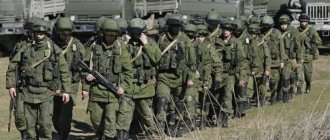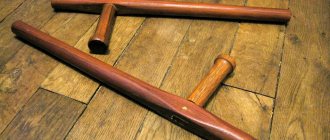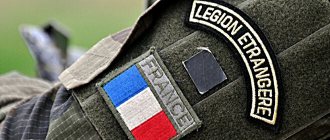The twentieth century was a period of intensive development of military aviation in many European countries. The reason for the emergence of air forces was the need of states for air and missile defense of economic and political centers. The development of combat aviation was observed not only in Europe. The twentieth century was a time of increasing the power of the Japanese Air Force, whose government also sought to protect itself and strategic and nationally important facilities.
1916-1930. Activities of manufacturing companies
At this time, the Japanese companies Kawasaki, Nakajima and Mitsubishi were developing a unique flying boat, Yokoso. Since 1916, Japanese manufacturers have created designs for the best aircraft models in Germany, France and England. This state of affairs lasted for fifteen years. Since 1930, companies began producing aircraft for the Japanese Air Force. Today the armed forces of this state are among the ten most powerful armies in the world.
Air force command structure before World War I
For a long time, the armed forces of the Japanese Empire consisted of two military infrastructures independent from each other - the ground forces and the navy. The leadership of the former sought to have their own aviation units under command to transport their cargo. To create such aircraft carriers in the city of Takinawa, at the Arsenal No. 1 military plant, which belonged to the ground forces, existing passenger and merchant ships were improved and redesigned. They were auxiliary vehicles and were widely used to transport ground forces personnel and armored vehicles. On the territory of this plant there was an airfield, the infrastructure of which made it possible to test captured aircraft.
Before World War I, Japanese army aviation had its main military unit - the air brigade of the ground forces. It consisted of squadrons (AE). Each contained eleven airplanes. Of these, three vehicles belonged to the reserve. The same number made up one link of the aviation line (LA) and were subordinate to the headquarters. Each squadron was intended for a separate mission: conducting reconnaissance, fighter and light bomber missions assigned to the Japanese Air Force. The equipment and weapons of reconnaissance air regiments numbered 30 units, and fighter air regiments - 45. Specialized air groups formed divisions that had their own airfields and garrisons. They were consolidated into army aviation corps. They were controlled by officers of at least the rank of captain.
Green light for export
The Reichsluftfahrtministerium (RLM) gave its consent to export the Bf 109 on July 9, 1938. At the same time, the Japanese aircraft manufacturer Kawasaki Kokuki Kogyo K. K (Kawasaki) showed interest in producing the Bf 109 for the Imperial Army. On August 10, the RLM gave the green light for the export of the Bf 109 with a more powerful Daimler Benz DB 600 G engine. This engine served as the basis for the improved DB 601 aircraft engine that was equipped with the Bf 109 E. Now there was even talk of rights to manufacture the Bf 109 under license, for which Japan was expected to pay about 700,000 Reichsmarks.
Nearly a year after the Japanese export permit was issued, and approximately 18 months after Fokkes & Koch, Messerschmitt's local representative, entered into negotiations, an agreement was reached: a contract was awarded to the Japanese company Okura & Co. on June 7, 1939. Ltd. for the delivery of ten Bf 109 E fighters over the next six months.
object of desire: Bf 109 E-1 fighter from the 1st Fighter Group of the JG 54 fighter squadron. In accordance with the paint scheme adopted after the outbreak of World War II, the aircraft was painted with RLM 70, RLM 71, RLM 65 paints. Photo from Herbert's collection Ringlestatter
However, in September 1939, after the outbreak of World War II, the Royal Navy established a blockade of the German sea coast. The situation was further worsened by the decision of the command of the German armed forces, which, as was the case in most countries at war, requisitioned all export orders for military equipment and banned the export of military materials. After the fall of France, the blockade became less severe, but the Japanese were probably not very happy when news came from Germany that the ordered aircraft could not be delivered either by sea or by rail through the Soviet Union.
Reorganization
In 1942, the Army Aviation Corps was liquidated. Only divisions remained, which, together with individual units of air regiments, constituted the highest command operational-tactical structure. Before World War II, all Japanese aviation was not a separate type of military force, but was subordinate to the fleet and army of the emperor. Soon, the army aviation units were reorganized, resulting in the formation of associations, or air regiments (AA), with an operational-strategic level:
- The First Air Force (VA) with a base in the Kanto region and headquarters in the city of Tokyo. This army controlled the Japanese and Kuril Islands, Korea, and Taiwan.
- The second VA was stationed in the city of Xinjing. The area of responsibility was Manchukuo.
- The Third VA of the Ground Forces was responsible for the Southeast Asian region. The headquarters was located in Singapore.
- The Fourth VA controlled New Guinea and the Solomon Islands. The headquarters was located in the city of Rabaul.
- The Fifth VA had a zone of responsibility within the occupied southern and eastern territories of China. The headquarters is in the city of Nanjing.
- The Sixth VA had its headquarters on the island of Kyushu. Controlled territory: the islands of Okinawa, Taiwan and western Japan.
"Kamikaze" of the Japanese Air Force
The history of the origin of this word stretches back to 1944. At this time, aviation was being reorganized in Japan. Based on the existing aviation regiments, the Japanese command formed special attack units. They were suicide squadrons and were designated in official documents as “Kamikaze” air squadrons. Their mission was to physically destroy the US Air Force's B-17 and B-29 bomber units. Since the Japanese special strike units carried out their work using a ram, there were no weapons on board their aircraft.
The design of such aircraft units is characterized by enhanced reinforcement of the fuselage. Over the entire history of the Japanese Air Force, over 160 special strike aviation units have been created. Of these, 57 were formed on the basis of training air divisions.
In 1945, Operation Ketsu-go was carried out to protect the islands of Japan from the air forces of the United States of America. As a result of the reorganization, all armies were united in a single structure under the leadership of Aviation General M. Kawabe.
Turbojet Engine Technology
It seems that during the development of the aircraft there was no area in which the Japanese designers did not want to adjust or change something. The technologies used to create a turbojet engine were no exception. In September 1944, work began on the design of the Nakajima Kikka, a prototype turbojet aircraft for the Imperial Japanese Navy at the end of World War II. Resembling the Messerschmitt Me 262 in outline, the Kikka was smaller and had a folding wing, which would allow the aircraft to be hidden in mountainous areas and caves. When it became clear that the Ne-12 turbojet engine could not provide sufficient thrust, inventive designers, based solely on photographs of the German BMW 003 turbojet engine, designed and built their own Ne-20 turbojet engine, which was installed in the Kikka. Equipped with two power plants producing 475 kg of thrust (each), the aircraft could reach a maximum speed of 435 mph (700 km/h). Kikka's first flight took place on August 7, 1945 (another example of things happening too late). A second prototype was also built, which never took off, like 18 other vehicles in various stages of assembly. It was planned to create a “faster” modification, equipped with two more powerful Ne-130 engines, each of which produced twice as much thrust as its predecessor. However, the war ended before the tests were carried out.
World War II Imperial Japanese Navy Mitsubishi MXY8 Akigusa ("Autumn Grass") jet fighter, prototype of the J8M Shusui airframe built at Dai-Ichi Kaigun Koku Gijitsusho.
Multi-purpose model
Among various combat aircraft, the Mitsubishi F-2 occupies a special place. The Japanese Air Force, for which it was designed, used this model as a trainer and also as a fighter-bomber. The aircraft is considered to be a successor to the previous unsuccessful version of the F-1, which was also created by the Japanese manufacturer Mitsubishi. The disadvantages that the F-1 had were that this model was released with an insufficient range and a small combat load. When designing the new F-2 model, Japanese designers and developers were influenced by the American Advanced Falcon project. Despite the fact that the created F-2 visually resembles its prototype - the American F-16 model, it is considered new in Japanese production, since it has some differences:
- Application of various construction materials. The manufacture of the Japanese model is characterized by the widespread use of advanced composite materials, which significantly affected the reduction in the weight of the airframe.
- The design of the F-2 aircraft is different from the F-16.
- Various on-board systems.
- The difference is in the weapons.
- The F-2 and its prototype use different electronics.
The design of the Japanese F-2 aircraft compares favorably with the prototype in its simplicity, lightness and manufacturability.
"Three Diamonds" in the service of Japan
Mitsubishi cars are familiar to any modern person, but those who are interested in history and military affairs also know other products of this corporation - tanks, combat aircraft and ships. Since the beginning of the twentieth century, the business giant has remained the guarantor of the military strength of the “Land of the Rising Sun,” and even the formal demilitarization of the country after 1945 did not change anything about this.
There are companies and brands that are directly associated with certain countries and are perceived almost as symbols of the states that gave birth to them. Speaking about Japan, such a brand can confidently be called Mitsubishi (in the generally accepted Russian transcription —
Mitsubishi). The gigantic business empire hidden under this name was born simultaneously with modern Japan during the Meiji Restoration, went through the dramatic changes of the 20th century and still remains full of strength.
This article, of course, is not a history of the Mitsubishi Corporation. —
such a story would require real research. We will only briefly highlight the contribution of the legendary brand’s enterprises to the military history of Japan. Without exaggeration, this contribution is gigantic: assistance to the imperial government in the Meiji era, the creation of the “muscles” of the Japanese Empire at the beginning of the twentieth century, the restoration of the national armed forces after the surrender of 1945 and the American occupation.
Birth of a legend
An interesting detail of Japanese history is that during the era of the Tokugawa shogunate, despite all the self-isolation of the country and the conservation of feudal orders, a kind of proto-capitalism developed quite successfully. Merchants, formally located at the lower levels of the feudal hierarchy, not only accumulated capital, but also sought to expand their influence in society. In the archaic rigid framework of the shogunate, business people were very cramped —
It is not surprising that they were among the leaders of revolutionary changes in the middle and second half of the 19th century.
The history of the financial and industrial group (zaibatsu) Mitsubishi was initially remarkable in that it was not one of the old merchant clans that had been formed since the 17th century, —
such as Mitsui and Sumitomo. The founder of the group, Yataro Iwasaki (1835-1885), was a poor samurai whose fate was changed by his acquaintance with the reformist politician Toyo Yoshida, famous in the mid-19th century. In 1862, Yoshida became the victim of an assassination attempt, but managed to open the way for his protégé to the influential Tosa samurai clan, where Iwasaki became the head of the trading bureau in the city of Nagasaki. In this position, the young businessman successfully coped with the challenges of international trade, including resolving delicate issues of purchasing weapons and ammunition for his clan.
Yataro Iwasaki —
founding father of the Mitsubishi Corporation mitsubishi.com
It goes without saying that the energetic business man supported the Meiji Restoration in 1868 —
especially since his Tosa clan actively helped the emperor. Thanks to the first reforms of the new government, Iwasaki was able to expand his business. He moved to Osaka and bought a trading company there, which in 1873 was named Mitsubishi. The name played on the businessman's family coat of arms with three water chestnut leaves. Based on the coat of arms, they created the famous logo, in which the leaves turned into three diamond-like diamonds.
After the Meiji Restoration, Japan rapidly opened itself to the world. Iwasaki understood this and, with the intuition of a talented businessman, invested in shipping —
both cargo and passenger. The decision turned out to be correct, and she began to rapidly grow rich and expand. Money was also invested in business areas related to maritime transport: insurance, coal mining, ship maintenance and repair.
It is interesting that at the very beginning of its activities it turned out to be closely connected with the military sphere. In 1874, Iwasaki provided transport ships for an armed expedition to Taiwan undertaken by Japanese forces in response to the killing of Okinawan sailors by local residents. Taking into account the weakness of the then Japanese Navy, it would have been simply impossible to carry out such an operation without the help of a businessman.
Japanese military personnel and their native allies in Taiwan, 1874. Engraving from the British newspaper “The Graphic: An Illustrated Weekly Newspaper” sites.lafayette.edu
In 1877, Iwasaki supported the government in suppressing the Satsuma samurai rebellion, providing ships to transport imperial troops and supply them. Repeated demonstrations of loyalty brought lucrative government contracts and subsidies, significantly strengthening its position. Close contacts were established with the armed forces, which later allowed the corporation to occupy an important place in the structure of the military-industrial complex.
In 1884, Iwasaki leased a shipyard in Nagasaki from the government - the most modern and well-equipped in Japan at that time. The profitable privatization deal turned out to be the last great success in the life of the businessman, as the following year he died of cancer. The shipyard in Nagasaki became the first large industrial enterprise of the Mitsubishi Corporation and formed the basis for the future flourishing of the business empire.
Military shipbuilding "Mitsubishi"
Yanosuke Iwasaki (the younger brother of the late Yataro), who became the owner of the corporation, continued the development of industrial capacities. In 1887, he completely bought the shipyard in Nagasaki from the state, and in 1891 he acquired the shipyard in Yokohama. The shipbuilding sector of the corporation was finally formed under the leadership of the son of the company founder, Hisaya Iwasaki. In 1905, the Kobe shipyard became the property of Mitsubishi, and in 1914, the Shimonoseki shipyard. Control of four powerful shipyards made the zaibatsu the largest private shipbuilder in Japan.
Dry dock No. 3 of the Mitsubishi shipyard in Nagasaki, built in 1901-1905, and the most powerful 150-ton crane in Japan. Japanese postcard from the early 20th century oldtokyo.com
At the beginning of the twentieth century, the strengthening of Japanese industry allowed the country to abandon orders for warships abroad and build them at home. Mitsubishi turned out to be one of two Japanese private corporations capable of carrying out such important and large-scale tasks (the second was Kawasaki). The main burden in military shipbuilding fell on the Mitsubishi shipyard in Nagasaki, the company’s flagship in this industry, which had the necessary technical equipment and qualified personnel.
An eloquent fact of Mitsubishi’s capabilities was that it participated in the construction of the Japanese battle fleet. The corporation's equipment was supplied for the first two Japanese Kawachi-class dreadnoughts, built at Navy shipyards in 1909-1912. In March 1912, the Kongo-class battlecruiser Kirishima with a standard displacement of 26,000 tons was laid down at the Nagasaki shipyard, launched in December 1913 and commissioned in 1915. In May 1915, construction began on the Ise-class battleship Hyuga in Nagasaki with a standard displacement of 30,000 tons; it was launched in January 1916 and commissioned in 1918.
Launching of the hull of the battle cruiser Kirishima, December 1, 1913 reddit.com/r/WarshipPorn/
Before and during World War I, Mitsubishi participated in programs to build the latest light cruisers with steam turbine engines, the Chikuma class, the first large ocean-going destroyers, the Umikaze class, and large submarines, the L-1 class. In 1922, one of the first two heavy cruisers of the Japanese Navy, Furutaka, the lead ship of its type (launched in 1925, commissioned in 1926), was laid down in Nagasaki. In 1929-1933, the company's first aircraft carrier, the light aircraft carrier Ryujo, was built at the Mitsubishi shipyard in Yokohama.
In general, Mitsubishi's military shipbuilding was on a gigantic scale, and it is impossible to describe it in one article. We would like to separately note the corporation’s participation in the program for the construction of unique super-battleships of the Yamato type. The shipyard in Nagasaki received an order in 1937 to build the second ship in the series, called Musashi. The laying of the giant took place on March 29, 1938; in order to carry out the necessary work, the huge dock had to be modified and additionally equipped. Construction was accompanied by unprecedented security measures and was carried out in an atmosphere of absolute secrecy; Mitsubishi engineers and workers had to solve the most difficult problems. Musashi's hull was launched on November 1, 1940, and the battleship was officially commissioned in August 1942.
Battleship Musashi on her last combat mission, October 1944. Colorized photo blog.livedoor.jp/irootoko_jr
Military aircraft manufacturing "Mitsubishi"
The development of this high-tech industry began under the leadership of Koyata Iwasaki, the nephew of the founder of Mitsubishi, who headed the family business in 1916-1945. In 1918, preparatory work began, and in 1921, the zaibatsu invited British aircraft engineers who had previously worked for Sopwith, led by Herbert Smith, to Japan. The British brought with them valuable experience gained during the battles of the First World War, and immediately gave a powerful impetus to the Japanese aircraft industry. However, the Japanese did not work with the “gaijin” for long and very soon trained their own engineering personnel.
From the very beginning of their work, Mitsubishi aircraft designers concentrated on aircraft for the needs of Japanese naval aviation. The direction looked very promising as the Imperial Navy began experimenting with aircraft carriers. This is how the first Japanese carrier-based fighter, 1MF, was born, produced in 1923-1929. Its successor in 1936 was the A5M, the world's first serial carrier-based monoplane fighter. In 1939, aircraft designer Jiro Horikoshi, who worked for Mitsubishi, created a masterpiece of Japanese aircraft construction - the A6M carrier-based fighter. From 1940 to 1945, 3,879 of the famous Zeros were built, and about 6,500 more of these aircraft were built under license.
The fate of Jiro Horikoshi and the story of the creation of “Zero” became the main themes of the film by the famous animator Hayao Miyazaki “The Wind Rises” (2013). This picture is a kind of encyclopedia of the Japanese aircraft industry of the 20-30s
In addition to fighter aircraft, the Mitsubishi Corporation became the main supplier of shore-based bombers to the Navy. In 1935, the prototype of the G3M long-range twin-engine torpedo bomber appeared - one of the most advanced aircraft of its class in the world. The aircraft was produced until 1941 (615 aircraft), then its successor was the new G4M. The Betty, as it was called by the Allies, remained the Japanese Navy's primary bomber and torpedo bomber until the end of the war. Despite obsolescence during the war, more than 2,400 of these aircraft were produced.
Mitsubishi twin-engine bombers also found widespread use in the aviation of the Imperial Japanese Army. In 1937, production of the first modern long-range bomber of the Army Air Forces, designated Ki-21, began. The success of the machine is evidenced by the fact that it was produced until 1944 (more than 2000 units built), on its basis the Ki-57 military transport aircraft was created. Since 1943, the powerful attack aircraft Ki-67 Hiryu was produced (until 1945, 698 of these machines were built). One cannot help but recall the twin-engine high-speed high-altitude reconnaissance aircraft Ki-46, produced in 1940-1945 (more than 1,700 units built), which is generally considered one of the best aircraft of World War II in its class.
A Ki-46 reconnaissance aircraft in the skies over northern Australia. Computer graphics by Michael Claringbold abc.net.au
Tank building "Mitsubishi"
The first Japanese tank of the original design, Type 89 “I-Go”, was created in 1929 at the state arsenal in Osaka. Mitsubishi participated in the mass production of this vehicle, but very quickly came to its own design of armored vehicles. The results of activities in this direction turned out to be very contradictory. Unlike shipbuilding and aircraft manufacturing, Japanese tank building at the global level consistently remained among the laggards, although it undoubtedly had its own achievements.
In 1934, Mitsubishi presented a sample of the first full-fledged light tank of Japanese design for testing. At the time of its appearance, the vehicle met international standards and was put into service in 1935 under the designation Type 95 “Ha-Go”. Serial production did not start in 1936. As the need for armored vehicles grew (in those years a big war broke out in China), the production of the tank was organized under license and others were produced until 1943, its modification with a different turret and cannon (Type 4 “Ke-Nu”) - until 1945. The number of vehicles built varies greatly among different sources: the range ranges from 1,161 to 2,378 units. Such a demand for a tank that was obsolete at the end of the 30s speaks more than convincingly about the problems of Japanese tank building. Be that as it may, “Ha-Go” became almost a symbol of the armored vehicles of the “Land of the Rising Sun” during the Second World War. Japanese tank crews used Type 95 vehicles to fight on all fronts where the imperial army operated.
Type 95 Ha-Go tank captured by US Marines on Iwo Jima 3.plala.or.jp/takihome
In 1936, Mitsubishi engineers presented a prototype of a medium (according to the Japanese classification, although the vehicle weighed 15 tons) tank, which was superior in its characteristics to the archaic Type 89 I-Go. The military liked the vehicle and was put into service in 1937 under the designation Type 97 “Chi-Ha”. Based on the results of the battles at Khalkhin Gol, it became clear that the short-barreled 57-mm cannon was not suitable for combating enemy armored vehicles. Therefore, in 1942, the Type 97 Shinhoto Chi-Ha model was put into production, armed with a very successful 47-mm anti-tank gun. In 1943-1944, the Type 1 “Chi-He” model was produced in a small series - a deep modernization of the base tank with a 47-mm cannon and enhanced armor protection. The finale of the series was the Type 3 “Chi-Nu” medium tank (1943-1945), a fundamentally new vehicle with a 75 mm cannon.
Philippines, January 1945: Shinhoto Chi-Ha engages Shermans from an ambush. Computer graphics by Richard Chasemore warwall.ru
In 1938-1945, 1100-1200 “Chi-Ha”, about 900 “Shinhoto Chi-Ha”, 170 “Chi-He” and from 60 to 166 “Chi-Nu” were produced. In addition, command tanks, engineering vehicles, fire support tanks with 75 mm and even 120 mm guns, and a whole series of self-propelled guns (self-propelled 105 mm and 150 mm howitzers, tank destroyers with 75 mm guns) were produced at the same base. . Mitsubishi and other Japanese manufacturers of armored vehicles were unable to ensure large-scale production of vehicles that met international standards - the most successful models of tanks and self-propelled guns were very few in number.
Speaking about Mitsubishi armored vehicles, one cannot help but recall the original Type 2 Ka-Mi amphibious tank, produced in 1942-1945 (180-184 vehicles were built). The tank featured an advanced design and, thanks to its removable pontoons, demonstrated impressive seaworthiness. Unfortunately for the Japanese, the Ka-Mi did not have time to take part in the offensive operations of the initial period of the war in the Pacific. This did not allow the vehicle to fully realize its potential, although there is every reason to consider Type 2 as perhaps the best production amphibious tank of World War II.
Ka-Mi tanks of the 1st detachment of the Yokosuka Navy ground forces 3.plala.or.jp/takihome
After 1945
The surrender of the Japanese Empire and the establishment of the American occupation regime seemed to put an end to the existence of the Mitsubishi Corporation. The occupation administration set a course for the liquidation of the zaibatsu commercial and industrial groups, seeing in them the support of the old regime. Mitsubishi was forcibly divided into a number of companies formally independent from each other.
By and large, decartelization turned out to be a fiction, and after the end of the occupation regime, old ties were quickly restored. The Mitsubishi Corporation was officially revived in the early 60s and took its rightful place in the Japanese economy. Under the conditions of the “economic miracle,” another period of prosperity for the country began, inevitably accompanied by business expansion. In particular, Mitsubishi has firmly established itself in the global car and motorcycle market, becoming one of the players of planetary importance.
Already in the mid-50s, Mitsubishi enterprises returned to the aviation industry, taking part in the creation of a turboprop airliner and the NAMC YS-11 patrol aircraft (the first flight took place in 1962, the aircraft is still in service). It is noteworthy that the creator of Zero, Jiro Horikoshi, participated in the design of this machine. In 1956-1961, the still formally divided corporation played a decisive role in the revival of the Japanese Air Force, building 300 F-86 Saber fighters under American license.
The situation has actually returned to pre-war times: from the late 50s to the present day, Mitsubishi has been a key supplier of aircraft equipment for the Japanese Self-Defense Forces. F-104, F-4 and F-15 fighters and S-70 helicopters were built under an American license. The corporation designed and produced original combat aircraft F-1, F-2 and others. In addition, Mitsubishi has mastered the production of a wide range of military missiles for various purposes, including anti-ship missiles.
3/3
Heading1
Heading2
Heading3
Two modern Mitsubishi combat aircraft - F-15J (155 combat and 45 training in service) and F-2 (62 combat and 20 training) militarywatchmagazine.com
Soryu-class diesel-electric submarine SS-505 Zuiryu: built at the Mitsubishi shipyard in Kobe in 2009-2011, commissioned in 2013 reddit.com/r/WarshipPorn/
Modern main battle tanks Type 90 (left) and Type 10, created by the Mitsubishi Corporation reddit.com/r/TankPorn
With the restoration of the Japanese Navy, Mitsubishi's military shipbuilding was also revived. In 1954-1956, the then divided Mitsubishi shipyards in Nagasaki and Kobe built the first Japanese warships after the end of the war - two Harukaze-class destroyers. The company then participated in the construction of the Hayashio (1960-1962) and Natsushio (1961-1963) class submarines, as well as many other projects. Currently, the latest diesel-electric submarines of the Soryu type are being built at Mitsubishi shipyards. The largest warships built by the corporation are the missile destroyers Atago and Ashigara with a standard displacement of 7,700 tons (built in 2004-2008).
Finally, Mitsubishi took part in the creation of the first Japanese tank after 1945 - the Type 61 model, produced in 1961-1972 (about 560 vehicles were built). To this day, the corporation remains a monopoly in the production of tanks for the needs of the Ground Self-Defense Forces. In 1975-1988, the Type 74 model (870-890 vehicles) was produced, in 1990-2009 - Type 90 (341 vehicles), and since 2012, the Type 10 main battle tank program has been implemented (about 100 vehicles produced). The company also produces self-propelled guns and infantry fighting vehicles of various models.
The more than century-long history of cooperation between the Japanese business empire and the armed forces of the “Land of the Rising Sun” continues successfully. Moreover, given the trends in world politics and the mood of the Japanese political elite, there is no reason to doubt that Mitsubishi’s military production has a bright future. We will see with our own eyes what consequences the unfettered militarization of Japan will have for the world.
Sources:
- https://www.mitsubishi.com/e (official website of the Mitsubishi Corporation)
- https://www.mhi.com/ (official website of the Mitsubishi heavy industry group)
- https://combinedfleet.com/kaigun.htm
- https://www.globalsecurity.org/military/world/japan/index.html
- https://www3.plala.or.jp/takihome/
Model B6N1
The Japanese Air Force in World War II used one of its best carrier-based torpedo bombers, the B6N1 (“Tenzan”). Serial deliveries of this aircraft began in 1943. By the end of autumn, 133 aircraft had been constructed. The first samples were received by squadrons that included aircraft carriers: 601st, 652nd and 653rd. Since there was a real threat from the US Air Force to the island of Bougainville, the Japanese aviation leadership decided to transfer forty B6N1 units to Rabaul. In November, the first air battle took place with the participation of this model, which was lost. 16 combat “Tenzans” took part in it. Of these, the Japanese Air Force lost four. The next two sorties were also ineffective.
Marianas War
In June 1944, the Japanese Air Force used the carrier-based Tenzan in the Battle of the Mariana Islands. A total of 68 units took part. The B6N1 model in this battle served as torpedo bombers and radar leaders - they were gunners for special attack groups of Japanese aviation. This battle was lost by Japan and its aircraft. Of the 68 aircraft, only eight returned to base.
After the Battle of the Mariana Islands, the Japanese aviation leadership decided to use this aircraft model only from a coastal base.
Confrontation with the USSR
Tenzan aircraft were used as bombers and kamikaze vehicles in the battles for Okinawa. The B6N1 aircraft was equipped with special radars. Therefore, the Japanese Aviation Command assigned this model to the 93rd Kokutai (air group), which carried out anti-submarine patrols. “Tenzans” also entered the 553rd Kokutai. The Japanese Air Force air group consisted of 13 aircraft that took part in battles with the aviation of the Soviet Union.
Despite their positive technical parameters, the Japanese Tenzans had the disadvantage of an unsuccessful choice of engine. This slowed down the process of introducing the B6N1 into mass production. As a result, the released models lagged significantly behind enemy aircraft.
Production and operation of the J2M2 "Raiden" interceptor fighter
Production of the J2M2 "Raiden" fighter-interceptor was slow and difficult. The Kasei 23A engine was the first among Japanese engines to be equipped with a water-methanol mixture injection system. If the thick smoke exhaust at maximum gas was eliminated by introducing a direct fuel injection system and a water-alcohol mixture, then at first it was not possible to cope with engine vibration in some operating modes by any means. Ultimately, the problem was solved by simultaneously installing dampers on the motor mount and modifying the propeller, however, these shortcomings were far from the only ones in a long series of “tweaks” that fell on the Raiden.
Japanese pilots discussing a flight mission, next to one of the Raiden J2M3 interceptors
As a result, during six months of mass production, only... 14 aircraft were produced, and this included three experimental J2M1s! However, this thin “trickle” dried up after 2 “raid” accidents occurred one after another in June-July 1943. In the first case, the plane was completely destroyed, but in the second, the pilot managed to land the faulty aircraft and a mysterious malfunction was discovered - the tail wheel, after being retracted, turned out the strut and pinched the control wiring.
The aircraft controls were immediately modified, and only now deliveries of J2M2 interceptor fighters began to the troops.
Japanese aviation fleet
In 1975, the Japanese Air Force personnel consisted of 45 thousand people. The combat aircraft fleet consisted of 500 units. Of these, 60 F-4EJs, 170 F10-4Js and 250 F-86Fs belonged to fighter aircraft. Models RF-4E and RF-86F (20 units) were used for reconnaissance. The Japanese Air Force provided 35 aircraft and 20 helicopters with 150 Hajk-J missile launchers to transport cargo and the wounded. There were 350 aircraft in flight schools. For deployment, the Japanese aviation command had 15 air bases and airfields at its disposal.
In 2012, the number of personnel decreased from 45,000 to 43,700. The aircraft fleet increased significantly (by 200 units).
The Japanese Air Force today contains 700 units, including:
- 260 – tactical and multi-role fighters;
- 200 – attack aircraft and training models;
- 17 – AWACS aircraft;
- 7 – models carrying out electronic reconnaissance;
- 4 – strategic tankers;
- 44 – military transport vehicles.
Characteristics of the J2M3 "Raiden" fighter
| A country: | Japan |
| Type: | Interceptor fighter |
| Year of issue: | 1942 |
| Crew: | 1 person |
| Engine: | 1x Mitsubishi MK4R-A “Kasei 23a” air-cooled, 1410 hp (at an altitude of 4800 m). |
| Maximum speed: | 580 km/h |
| Practical ceiling: | 11,700 m |
| Range of flight: | 1900 km |
| Empty weight: | 2.5 tons |
| Maximum take-off weight: | 3.44 tons |
| Wingspan: | 10.8 m |
| Length: | 9.95 m |
| Height: | 3.95 m |
| Wing area: | 20.05 sq.m. |
| Weapons: | 2x 20 mm wing guns "type 99" model 2, 2x 20 mm wing guns "type 99" model 1, could additionally take 2x 60 kg bombs |
Characteristics are given for the fighter-interceptor model J2M3 “Raiden”
Defense plan
The decrease in the number of personnel with the expansion of the aircraft combat fleet indicates that the Japanese Air Force is focusing not on mass, but on targeted impact. According to the new defense plan, the Air Force will not increase its self-defense forces, but will begin to relocate its squadrons, focusing them on strategically convenient positions. Ryuko Island is considered one such place. The second stage in the activities of the aviation command will be the acquisition of fifth-generation fighter aircraft.
Desperate search for a fighter
In parallel with attempts to find a way to deliver ten ordered Bf 109 fighters, a representative of the Fokkes & Koch company in Mukden, Manchuria, Fujiro Koh, contacted Major Maruyama, the future commander of the air force of the puppet Manchuria. After the Manchurian Air Force received the task of protecting cities and industrial centers from air strikes, interest arose in high-quality, highly efficient aircraft. For this reason, the command of the Imperial Army was awaiting with great interest the delivery of the ten ordered Messerschmitts and the results of their tests. The plans of the command of the Imperial Army included the purchase of Bf 109 fighters for the army aviation of Manchuria.
However, the Messerschmitts were still in Germany, and after July 1940 the supply contract was reduced from ten to two aircraft. Only the most urgent cargo could be transported on the few Japanese ships that left the ports of neutral European countries with German products.
The aircraft intended for Japan were assembled at the aircraft manufacturing plant Wiener Neustädter Flugzeugwerke GmbH (WNF) and on February 11, the train with the aircraft left Wiener Neustadt and went to the Spanish port of Bilbao via Frankfurt am Main. Among other cargo, the train carriage contained two aircraft: Bf 109 E-7 fighters (serial numbers 6524 and 6525) with DB 601 engines (serial numbers 11813 and 11819).
The ship with fighters arrived in Japan on April 28, 1941 and a few days later, on May 4, the leading Messerschmitt test pilot Willi Stör and engineer Herbert Kaden set off from Germany along the Trans-Siberian Railway to Japan. They arrived in Gifu on June 19 along with Fokkes & Koch representative Apel to oversee the assembly of the two aircraft and conduct test flights. Two Bf 109 E-7 fighters were delivered to Kagamigahara airfield, where Kawasaki was to carry out test flights. Kawasaki received an order for assembly and acceptance testing. After this, the Bf 109 E-7 fighters are to be accepted and transferred to the Japanese Army. The next day we began unpacking the boxes and assessing the condition of the aircraft structural elements located there. Already in the afternoon the planes were on their own landing gear. It was assumed that assembly and test flights would take about two weeks, but everything turned out differently.
In fact, work on assembling the aircraft began on June 21, and within three days the wing consoles and tail units were attached to the fuselages. The next task was the installation of VDM propellers, which was carried out in the presence of representatives of Sumitomo, which received a license for these propellers in Japan. On June 28, the German representative of Daimler-Benz AG, Deck, joined the assembly of the aircraft, whose tasks, together with an employee of the engine-building division of the Kawasaki company [1], test engineer Takano, included preparing the engine. Upon inspection of the engines, it was found that in Germany, at the manufacturing plant, after assembly and testing and before packaging, they were not preserved. It was decided to disassemble the engines and rebuild them at the Kawasaki engine plant located in Kobe. The first DB 601 engine (serial number 11813) was returned from Kobe on July 9 and was installed on the Bf 109 E-7 fighter (serial number 6524).
Due to heavy rains, the first flight was made only on July 14. On this day, weathervane captain Stöhr made three flights, and on July 17 the acceptance flight took place. A man named Taschikawa and Lieutenant Colonel Saburo Amakasu, representing the Experimental Department of the Imperial Army, observed the summers. After Stöhr's last test flight, the vehicle was handed over to Lieutenant Colonel Amakas. To familiarize themselves with the transferred aircraft, two Japanese pilots were brought in: captains Iwahashi and Sakakawa, who studied the machine under the guidance of weathervane captain Stöhr.
the first Bf 109 E-7 fighter aircraft assembled and flown in Japan (serial number 6524). Japanese markings (a red circle with a thin white border) were applied to the upper and lower surfaces of the wing and the side surfaces of the fuselage. When Japan entered the war, the Allies, in keeping with the practice of naming fighters after men, gave the aircraft the designation Mike. Drawing by Angel Sanchez Serrano
